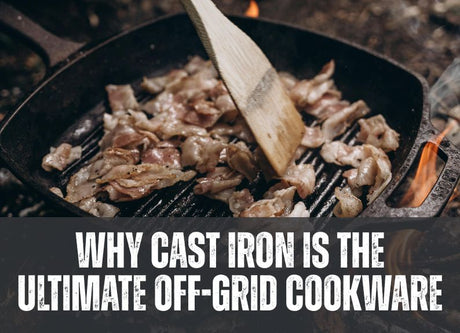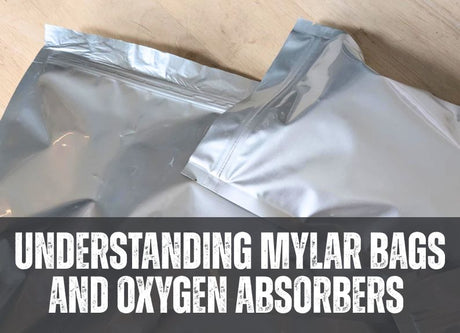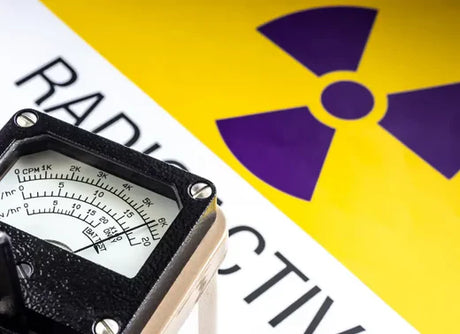In the wild, food scarcity is a reality. You can survive better by training your body to go longer with less by adopting intermittent fasting now. You’ve probably heard about different types of fasts, from religious to fundraising, but intermittent fasting is a different beast altogether.
We have written before about the necessity of changing your daily habits to support your future survival. Fasting can be a crucial aspect of weight loss and building healthy and adaptive habits. This blog series discusses the relationship between intermittent fasting and survival in a post-collapse environment. In part one, we look at what intermittent fasting is and why it is good for the body. In part two, we look at how intermittent fasting and survival go hand in hand by comparing them to post-collapse scenarios.
Want more?
- 8 things you can do every day to prepare for post-collapse.
- 9 Things Every New Prepper Should Do Immediately.

What is intermittent fasting?
This type of fasting is built into many human cultures and religious practices, but it has recently started gaining attention as a beneficial diet in popular culture. Intermittent fasting is intentional and scheduled fasting that has been shown to have significant benefits for the human body, including increased insulin resistance, autophagy, improved brain function, and decreased inflammation.
Fasting has been promoted in pop culture because of its lack of restriction on what you eat and emphasis on how you eat. In fasting, focusing on what you eat is also critical for overall health, especially when preparing for survival. A balanced diet is necessary for overall health and survival in a post-collapse environment.
The general rules for intermittent fasting are to wait at least 1-2 hours after waking up for calorie intake and to stop eating a minimum of 1-3 hours before bed. In a fasted state, you can consume water and caffeine as long as they do not contain any calories, such as milk or sugar. In a restricted calorie zone, opt for low-calorie and high-protein food options such as meat, nuts, fish, and lentils.
As Andrew Huberman notes in his extremely informative podcast, when practicing intermittent fasting, most people are extremely bad a recognizing the eating window they exist in and at knowing the difference between a fasting and non-fasting state. We prepare for post-collapse because it takes time to create new habits and begin to see the benefits of those habits. Starting now can save you later.
The four main types of studied intermittent fasting.
-
One Meal A Day (OMAD):
This intermittent fasting routine involves eating one large meal per day, which constitutes most of your caloric needs. This fasting method is specifically designed for those looking to reap the benefits of a calorie deficit, such as weight loss, while also deriving the benefits of intermittent fasting on the body. This diet involves either eating only one meal and then fasting or eating one meal and then severely limiting the caloric intake for the fasting period. It can be a good fasting style for you if your main concern is white fat loss and you are aware of the potential risks associated with OMAD.The benefits of OMAD are not different than those of intermittent fasting in general. Finding success depends on finding the right fasting schedule for your body. Most medical professionals will not recommend the OMAD schedule––especially the most strict version of it. The risks associated with OMAD include hypoglycemic symptoms, disordered eating outcomes, constipation, increased production of the hormone ghrelin (an appetite stimulant), and severe nutrient deficiencies. In addition, this may be the hardest restricted eating method to follow and the most potentially dangerous for those with pre-existing medical conditions such as pre-diabetes and diabetes or if you are pregnant or breastfeeding.
-
5:2 fasting schedule:
This schedule involves normal eating for 5 days of the week followed by two consecutive days of fasting or extremely restricted calorie intake. The 5:2 method of fasting can map onto a typical 7-day week, and that may help some people stick to the routine. However, a 5:2 diet probably reflects the conditions for post-collapse survival the least out of all the available intermittent fasting schedules so it may be the least interesting to you as a prepper.If you want to try this style of fasting, it is very important to consult with your doctor––especially if you have any pre-existing conditions such as pre-diabetes, diabetes, heart disease, or hypertension.
-
Alternate Day Fasting:
This fasting schedule involves very restricted calorie intake (about 20-25% of your regular caloric intake or around 500 calories) or fasting every second day. This version of intermittent fasting can be easier to follow than the 5:2 schedule because it is slightly less restrictive, and you can eat however you like every other day. However, for the most significant benefit, a balanced diet is seriously encouraged for overall health and preparedness skill development. -
Time Restricted Feeding:
This method tends to follow a 16:8 ratio, that is, 16 hours of fasting (with an emphasis on sleep-based fasting) and an 8-hour window of eating. The window for eating can be subjective; people find that anywhere from 4-10 hours work best for them and their lifestyle. TRF is the fasting style that might best mimic a realistic survival-based diet with limited calorie intake between long windows of fasting, whether because of food scarcity, rationing, or a nomadic lifestyle.This intermittent fasting regimen is also one of the easiest to follow and can greatly benefit preppers looking to increase their bodies' efficiency, lose weight, and live well in a more survival-based mindset. It also bears the least likelihood of having any adverse effects as you can acclimatize the body by slowly increasing the fasting increment over time.
How Intermittent Fasting and Survival Go Hand in Hand.
Ready to learn more? Part two of our exploration of intermittent fasting looks at how this diet pairs with survival in a post-collapse world.










